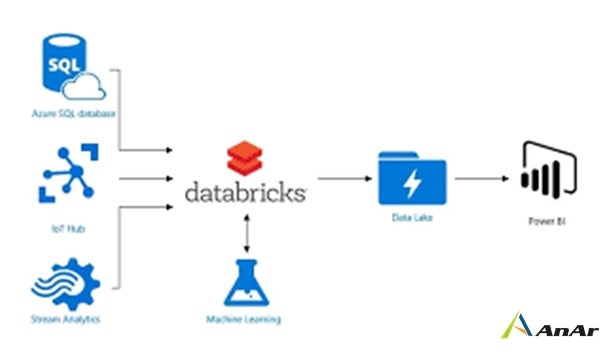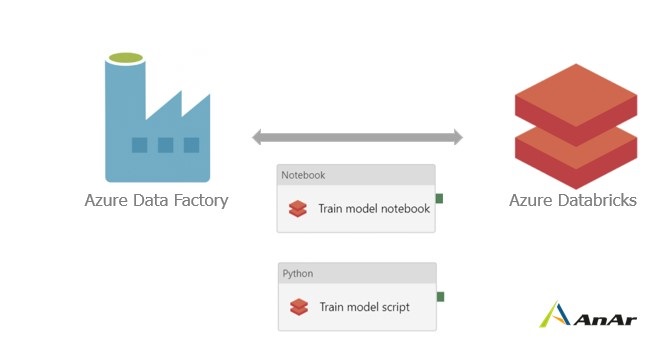Introduction:
Databricks and Microsoft collaborated on Azure Databricks, to provide data and AI services. The focus is on analytics, data engineering, data science, and ML. Databricks is designed to store all of your data on an easy-to-use open platform. Scalability, efficiency, and optimization are critical for any company running big data workloads in the cloud.
Azure Databricks is unification of Apache Spark, Microsoft, Cloud and Databricks. It is the basis of building advanced analytical solutions.
It is the only first-party service offering for Databricks. Customers of Databricks can choose from a variety of cloud destinations. The one-click set up, interactive workspace, and streamlining workflow, improves teamwork between data scientists, data engineers, business analysts, and support staff.
Currently, over 600 US companies with company size of 10000+ employees & 1000M revenue use Azure Databricks. The customer base around 51% is with 1000+employees, and 34% are mid-sized companies.
Why do organizations need Azure Databricks?
Organizations want to transform businesses with help of analytics. AI & ML are not only modes to increase profits, lessen costs. They have the transformative power of technology that additionally opens new streams of takings. Currently negligible percentage of organizations are capable to extract benefits from Artificial Intelligence. Experiential silos of teams, processes and infrastructure terminates the progress. It breaks down the silos, accelerates innovation.
Get 8x performance in indexing, caching, and advance querying. Azure Databricks guarantees 99.5% availability in more than 30 Azure regions. Speed and availability both the factors are vital. No need to get licenses if you are an Azure customer.
Data is the key element for digital transformation also a crucial point for defining AI approach. Effective strategy will strengthen position of an organization to face industry competition. Azure and Databricks teams constantly work towards deepening integrations to enhance performance and scalability.
Benefits due to Integration with Azure Services:
It has integration with Azure Data Lake Storage (ADLS), Azure Blob Storage, Azure Cosmos DB, Azure Data Factory, Azure SQL Data Warehouse (Azure SQL DW), Azure Event Hub, Azure Machine Learning, Azure Synapse Analytics, Microsoft Power BI, Apache Kafka for HDInsight, and few other Azure services.
- Data cloning
- Editing unstructured complex data
- Autoscaling cloud
- Optimizes performance
- Minimizes resource consumption
- Enables data teams of different sizes
- Run advance analysis for insights
- Integrated workspace to generate dashboards
Furthermore, integrated workspace enables you to create dashboards and integrate with a broad range of tools and services.
E.g.: 1. Azure Active Directory is used to store data 2. Azure Data Lake, Blob Storage for quickest data access 3. Power BI allows discoverability and visualization using data perspectives
Why Azure Databricks is considered the best platform to run applications of Machine Learning and Artificial Intelligence?
- Platform-as-a-Service
- Drag and Drop interface
- Faster than Apache Spark
- Re-usable data assets
- Reliable support, compliance, and Service-Level Agreement (SLA) of trusted cloud platform
- Create tested and secured architecture for Databricks environment to prevent data exportation
- Manage complete lifecycle of machine learning from experimentation stage to the production
- Real-time Workspace collaboration
- Databricks processes massive amount of data
- Reduced time of data processing
- Auto-termination of clusters
- Cloud infrastructure assists in running massive analytics jobs reliably
- Data pipelines ensure analytics of huge data received from inflow of various resources
- Apache Spark based analytics platform optimized for Microsoft Azure Cloud services
- Preconfigured systems require no maintenance
- Built-in API for various languages SQL, Java, Python, R and Scala
- Makes collaboration and integration easy
- Get control over permissions for clusters, data, jobs, and notebooks
- Monitor the scheduled jobs
- Remove redundant Apache Spark clusters or terminate them based on inactivity
- Eliminates the complexities of Big Data and Machine Learning
- MLib provides support for Machine Learning
- Faster deployment to production
- Interactive workspaces useful for data extraction and Machine Learning
- Multiple users can login to workspaces using their credentials
- ADD manages the role-based access and identity management to protect company data
- Clone notebooks to automate reproducibility
- Built-in version control eases monitoring
- Uses security framework of Azure Active Directory (AAD)
- No need to create separate environments or virtual machines (VMs) for development
- Suitable for small/large scale development and testing
- Share insights on data across the organization
Azure Databricks security best practices:
- Configure Diagnostic Logs for visibility of relevant platform
- Configurable IP Access lists for permissions and block lists to get higher control of workspace
- Allows to bring your very own enterprise managed virtual network for necessary customization
- Deploy workspace in private subnets that restricts inbound access to your network, clusters connectivity will enable communication with Azure Databricks infrastructure without utilizing public IP addresses
- Adopt different methods to connect clusters with your private virtual network.
- Use workspace encryption keys of your own or stick to those provided by Microsoft for the notebooks
- Encrypt the root storage account Databricks File System (DBFS)
- Control yet simplify the data lake access with help of Azure AD, you can also give role-based access
- Token Management API for insights and control over access in workspaces
ML & AI using Azure Databricks provides valuable analytics that directly impacts the business growth:
- Useful in data preparation, training, and deployment phases of Machine Learning
- Analyze the relevant data through the set analytics process
- Track records, code, config, data, and its results
- For better analysis the load more data frequently to receive data comprehensions
- Personalized recommendations based on online activity for better user engagement
- Establish relationship with datapoints to define actionable items
- Right audience identification and real-time advertisement targeting
- Achieve improved operational efficiency with updated customer profile
- Customer behavior analysis is useful for forwarding relevant offers, understanding the customer expectations, time consumed in comparing products and buying decisions
- Purchase history from customers of particular demographics shows the preferences and trends for certain category of products/services
- Click-through analysis for customer conversion data and studying strong and productive channels for product/service promotion
- Risk management eases with highlighted irregularities in real-time
- Predictability of audience interests is observed from the transactions that builds tentative demand analysis for companies to be ready to serve customers
- Spending’s also relate to the acceptable prices by end consumer, it also helps in floating discount schemes
- Designing a multi-channel marketing approach based on ratings, social media activity, and metadata
- Artificial Intelligence adds to capabilities of data analytics to focus on actual business problem and find right best probable answers
- AI will select the right set of data and respond at higher speed
Closure:
Azure Databricks is adopted by SMEs and large organizations to enhance productivity, to build a secure cloud platform that offers cloud native security and limitless scalability. Transform business data into powerful insights for evaluation. It empowers you to build smarter AI models/ solutions on basis of insights from data.
This cloud-based engineering tool is going to lead the industry to explore more possibilities with Big Data. Aim to solve complexity of ML Frameworks, libraries, and packages. Build data-driven enterprises to provide better value to customer.








